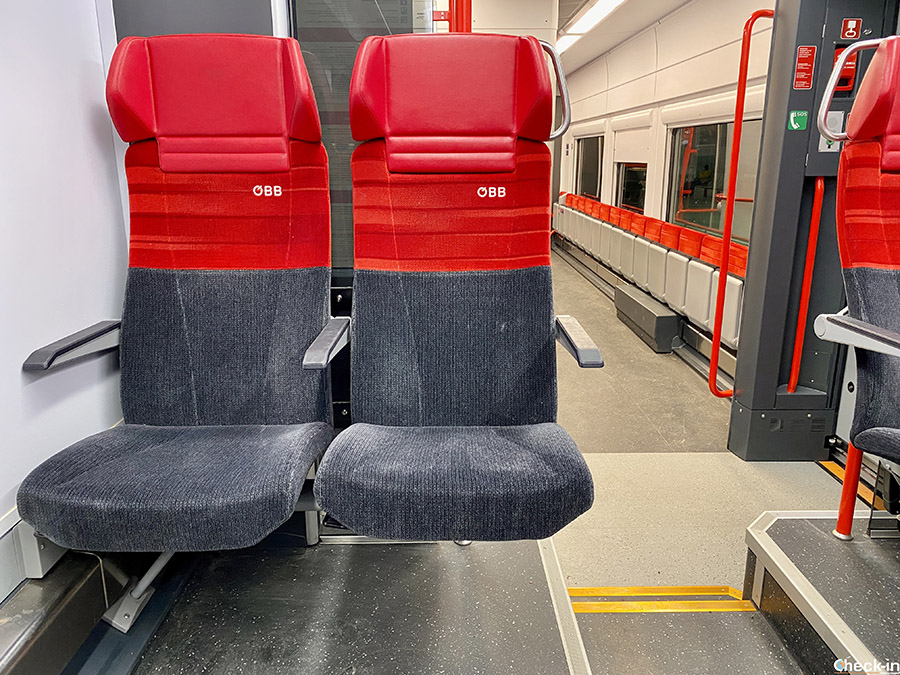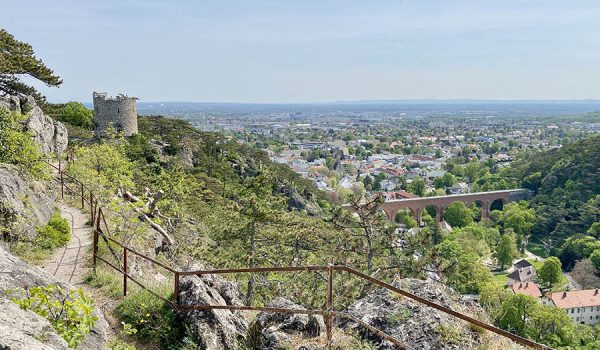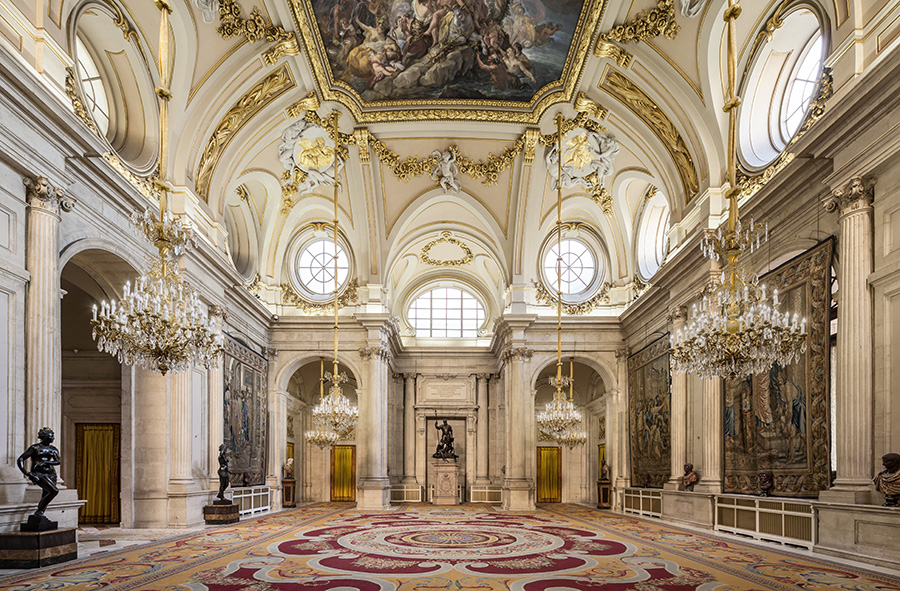Lower Austria is the largest federal state in the country and includes the city of Vienna. Crossed by the Danube, this territory boasts a great variety of landscapes and is therefore the ideal destination for those who want to take a day trip from the capital.
In my case, I travelled about 20 km south of Vienna, in the heart of the Wienerwald, between the towns of Maria-Enzersdorf and Mödling. I was able to admire three castles, walk along various paths that cross the area and that tell part of its history and then enjoy the relaxed atmosphere that still characterizes these two towns close to the Austrian capital city.
Maria-Enzersdorf and Mõdling, an excursion in Lower Austria from Vienna
Both locations are well served by regional trains from the capital and are therefore ideal destinations for those who want to travel by public transport.
More information about this is reported at the end of the article.
Schloss Hunyadi
From the Brunn-Maria Enzersdorf railway station, I take about twenty minutes to arrive in front of this late-Baroque castle that takes its name from the family that lived here between the 19th-20th centuries.
Today, the fortress and surrounding gardens are owned by the Municipality and are used for weddings and other private events.
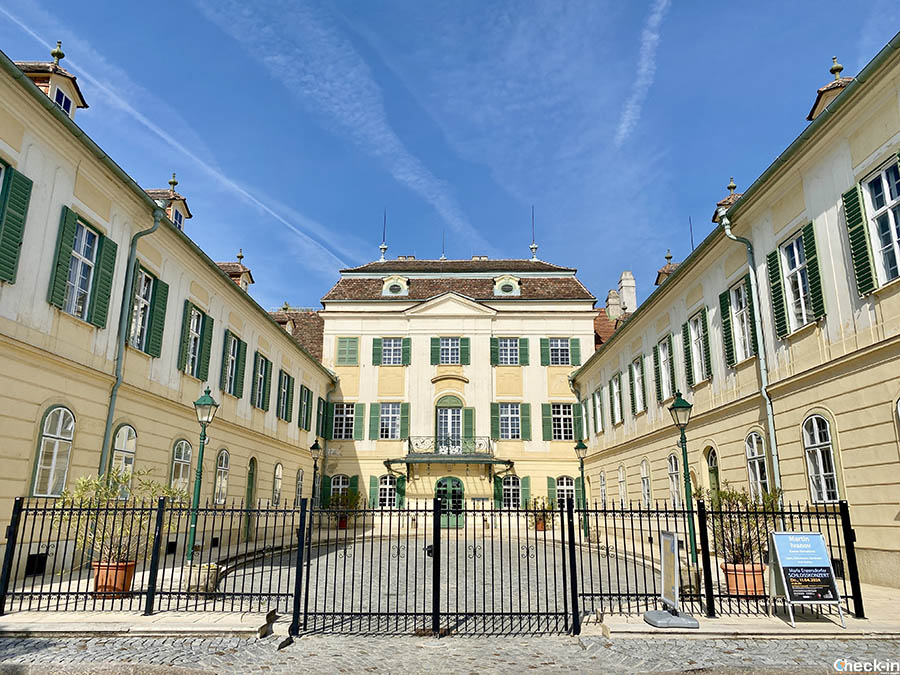
Liechtenstein Castle and Park
I need another ten minutes to reach the vaste green area that borders parts of the towns of Maria-Enzersdorf and Mödling. Inside, there is a dense network of mostly flat paths that allow you to discover various points of interest. You walk immersed in unspoiled nature, and sometimes only the echo of passing airplanes reminds me that Vienna is just a few kilometers away.
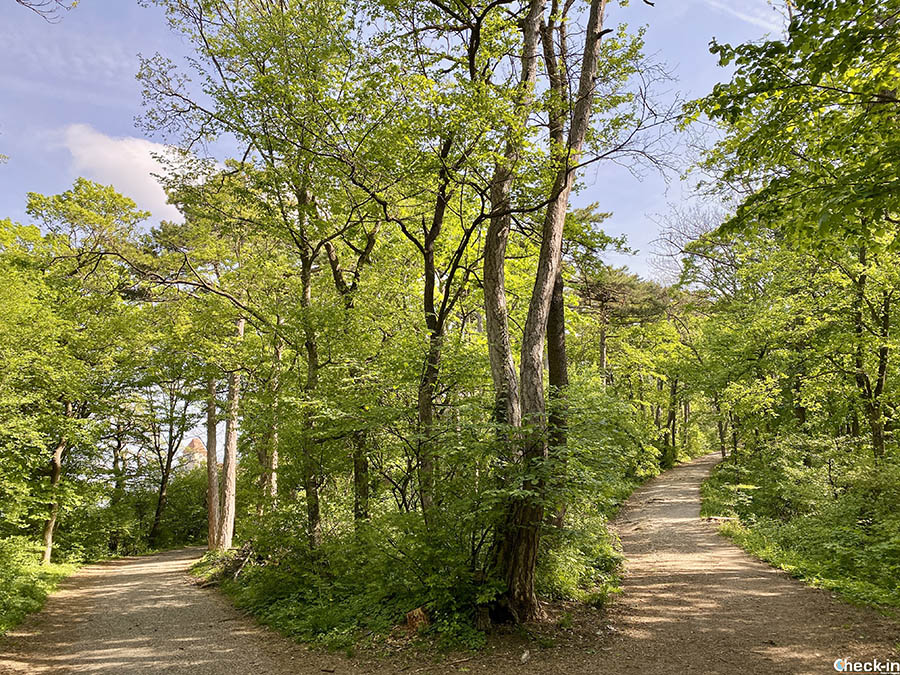
The first must-see stop is Burg Liechtenstein, one of the most famous attractions of the Wienerwald, the Vienna Woods that extends to the west of the Austrian capital. This is a picturesque castle rich in history as it was erected around 1130. It is here that the Liechtenstein dynasty originated, which is the princes of the state located between Austria and Switzerland.
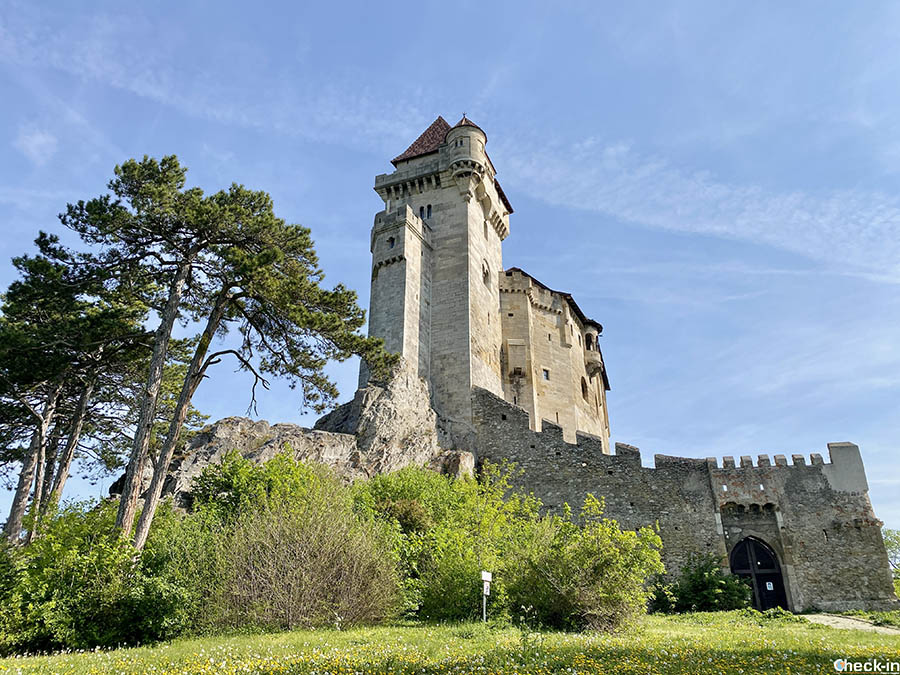
Over the centuries, the estate had other owners and returned to the original family at the beginning of the 19th century. Despite various interventions (and damages), some of the original Romanesque parts have still been preserved.
Ps: the word Liechtenstein means “light stone” and derives from the type of material used for the construction of the building, an unusual choice in this area.
The castle is open all year round, with variable hours depending on the season. There are only guided tours (also in English).
All information is provided on the Burg Liechtenstein website.
Entrance is free with the Vienna Pass.
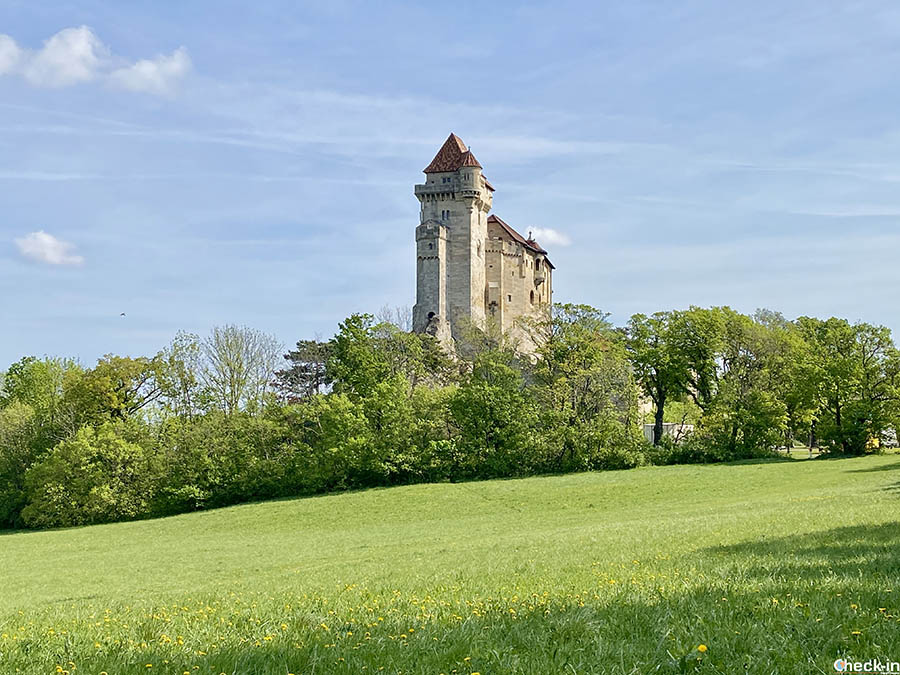
Then, I enter in the surrounding park where some remains of structures erected by the princes of the House are scattered.
The amphitheatre is one of the best examples. Dating back to 1810-1811 and clearly inspired by the Roman “Colosseo”, it was commissioned by Prince Giovanni I Giuseppe to embellish the pine forest he had planted a few years earlier.
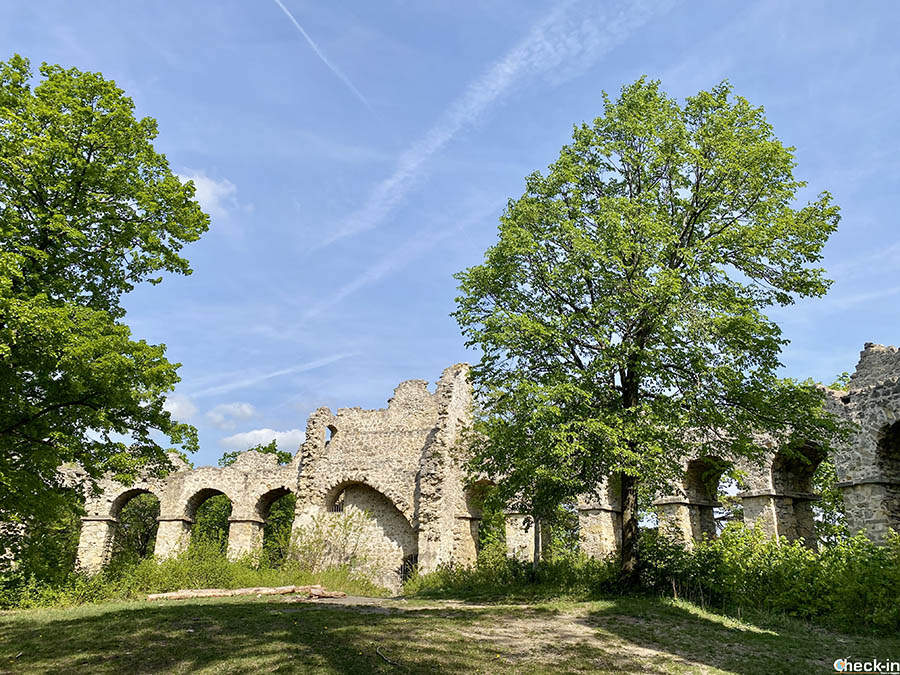
The green area around the Kalenderberg hill is crossed by numerous paths, and therefore various detours are possible. In this Komoot track you get an idea of the route I had planned, even if once there I followed it only in certain sections.
The Pfefferbüchsel (point no. 2 on the map) is what remains of the Chapel of Giovanni del Pellegrino built by the prince himself in 1818. It was destroyed thirty years later without ever having been repaired.
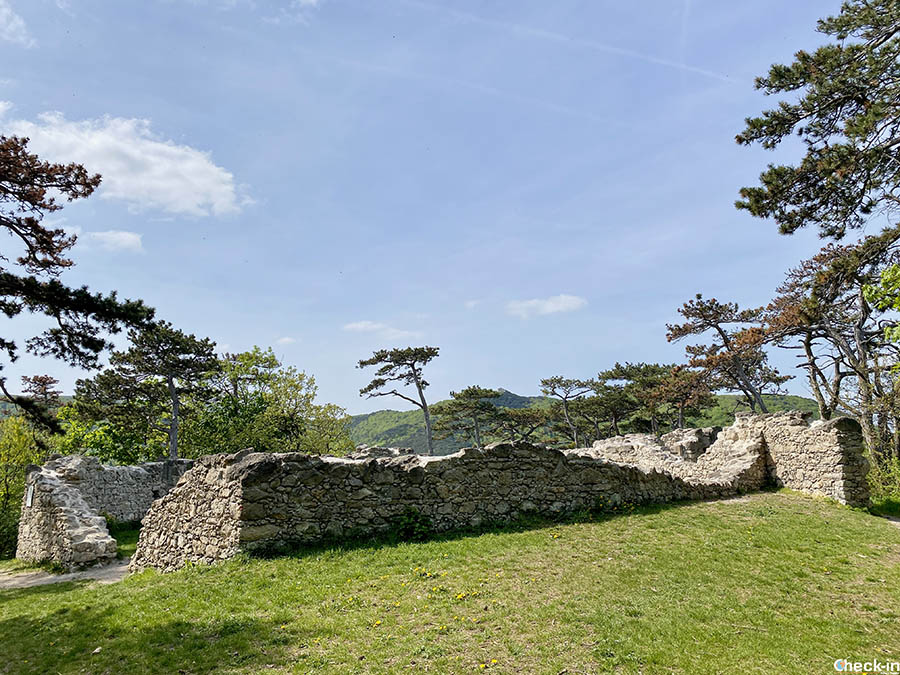
Continuing towards Mödling, you walk uphill until you reach a panoramic point (no. 3) overlooking the castle situated on the other side of the valley and which I will reach shortly.
The last stop on this side is near the Schwarzer Turm, the “Black Tower“, also built by Prince Giovanni I Giuseppe on the land where an ancient lookout post once stood. From here you enjoy a splendid view of the aqueduct that supplies the city of Vienna.
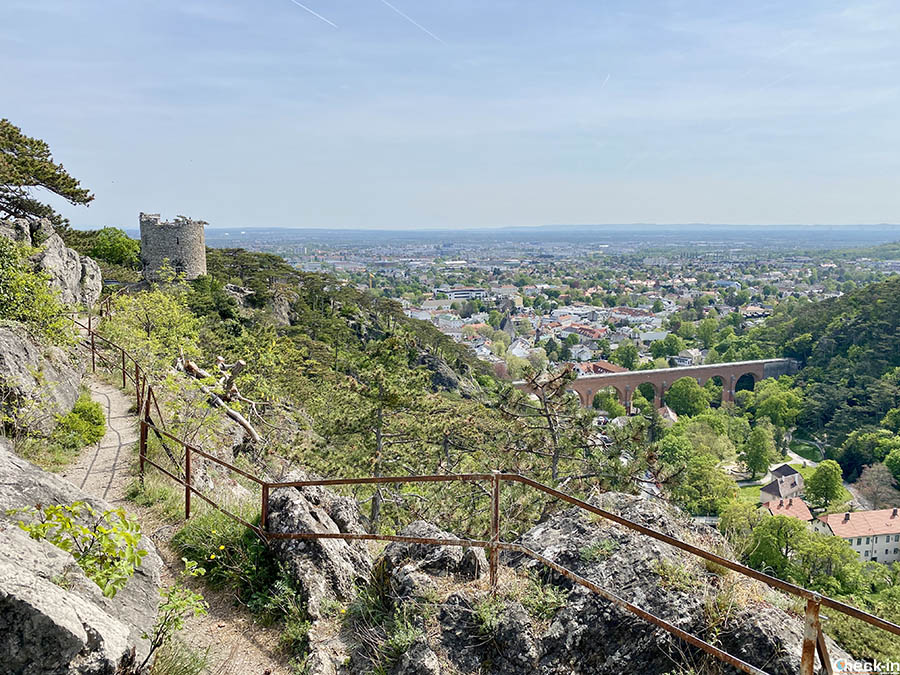
Burg Mödling
My hike continues on the opposite side, and to go down to the valley I decide to pass by the staircase at the foot of the Black Tower.
I suggest paying a little attention because the stone steps are quite irregular and can be slippery in the event of rain (there is a handrail). I guess there’s a simpler alternative anyway.
Crossing the bridge over the river Mödlingbach leads to a cycle and pedestrian path that connects some of the villages in the area.
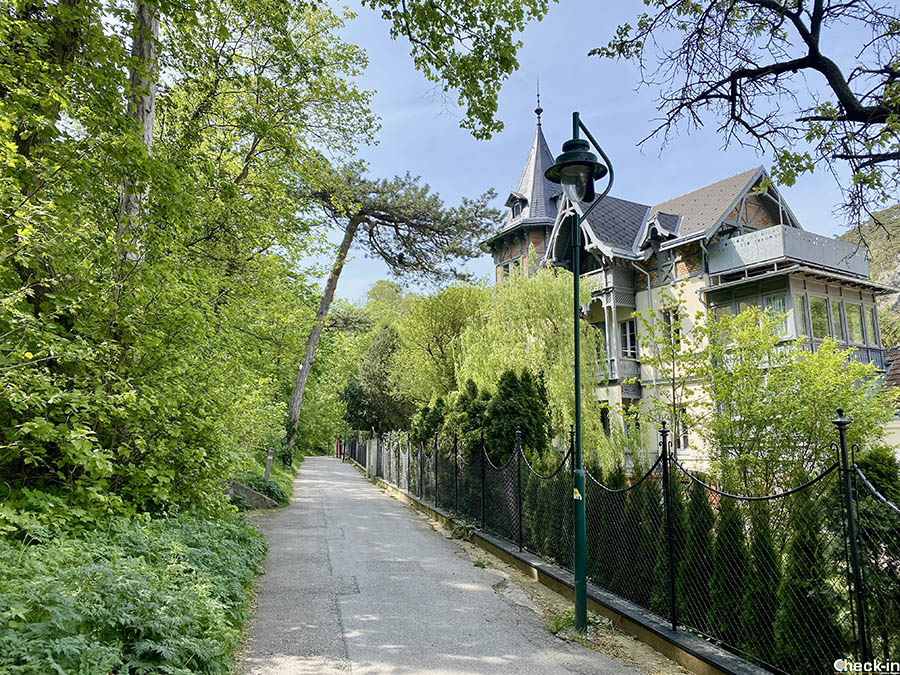
I follow the flat stretch until I take the detour on the left that goes up into the woods towards the Burg Mödling.
It is a castle dating back to the 12th century used as both a noble residence and a defensive structure. For this reason, it was destroyed and rebuilt several times until it was finally abandoned in the seventeenth century.
The fortress has however been secured and is therefore freely accessible.
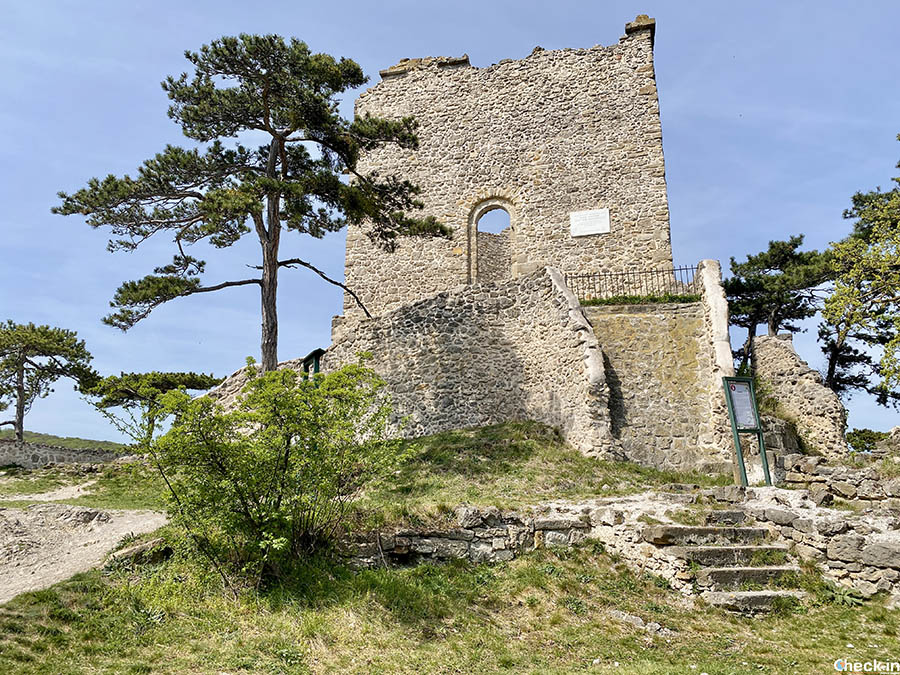
Where to eat in Mödling
Back on the cycle-pedestrian path, I pass a series of houses that lead me to the gardens at the foot of the Aqueduct. I am now near the city centre of Mödling.
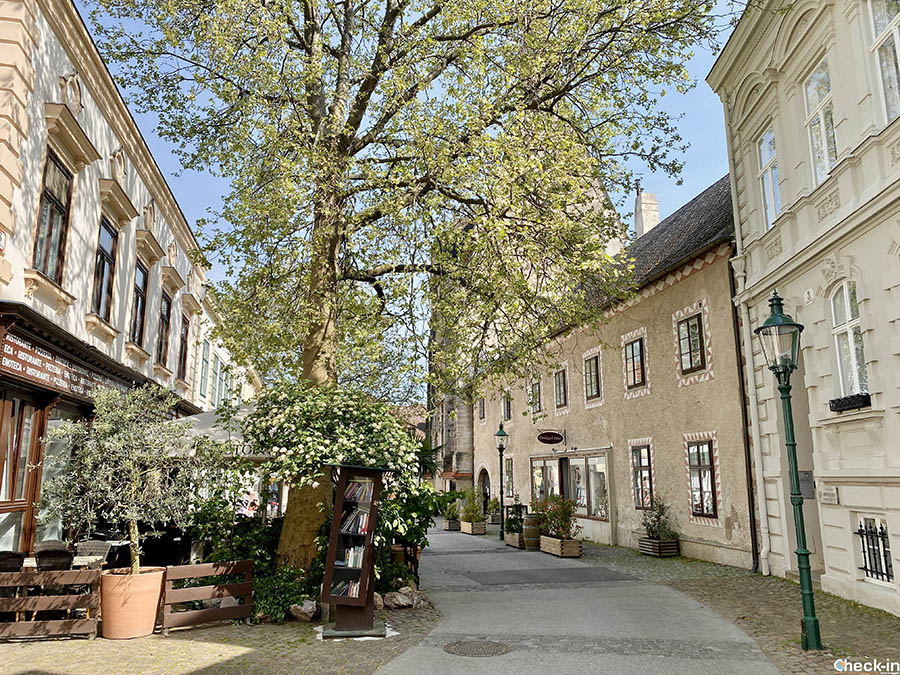
My choice for lunch – which then proved to be a good one – was the Maut Wirtshaus tavern, equipped with outdoor tables and I gladly take advantage of it given the beautiful spring day. As a main course, I ordered the Steirischer Backhenderlsalat, that is a fried chicken salad in the Styrian style accompanied by mixed vegetables.
For dessert, I went for a classic of Austrian cuisine and one of my absolute favorites, the Apfelstrudel!
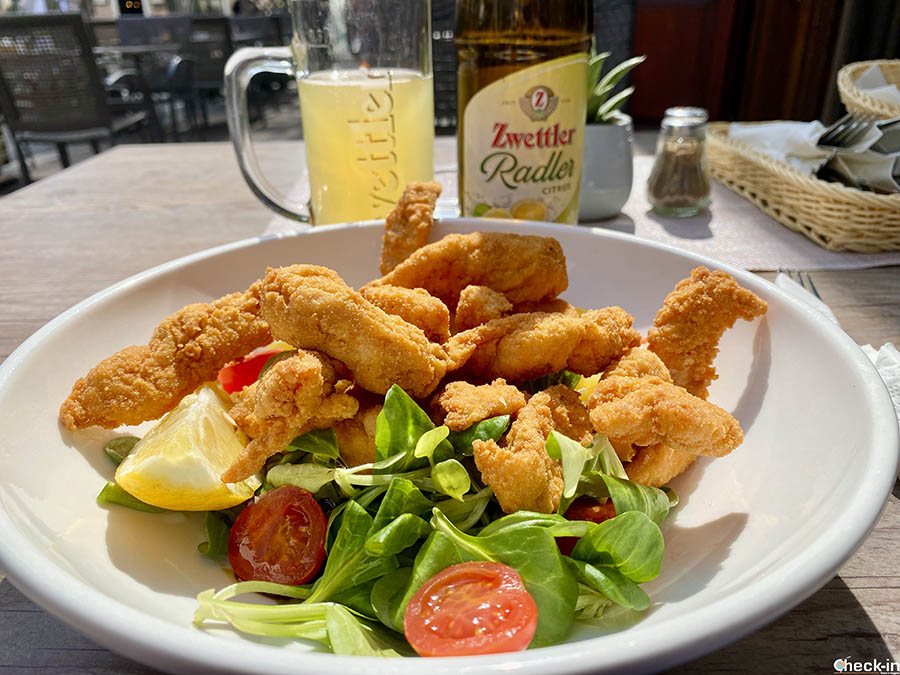
The experience was definitely good, also considering the price, which was cheaper compared to the average in Vienna. In total, I spent 25 €, 10% tip included (which is almost mandatory here).
The menu can be consulted on the restaurant’s website.
How to reach Maria-Enzersdorf and Mödling from Vienna
Organizing this excursion by public transport was really easy because the connections, both by road and rail, are frequent, punctual, and also economical.
I traveled by train, deciding to get off at Brunn-Maria Enzersdorf and then return to Vienna from Mödling. Both stations are located just over 1 Km from their respective urban centers.
Travel times and walking distances are approximately:
- from Brunn-Maria Enzersdorf to Schloss Hunyadi, 20 minutes (1.3 Km);
- from Brunn-Maria Enzersdorf to Burg Liechtenstein, 35 minutes (2.4 Km);
- from the Maut Wirtshaus tavern to Mödling Bahnhof station, 16 minutes (1.2 Km).
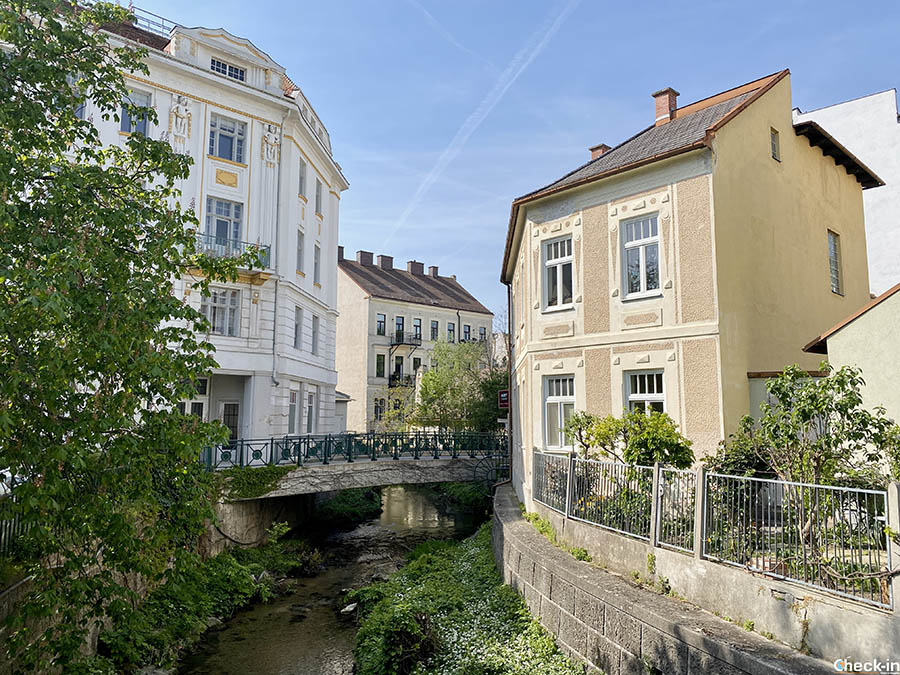
The two stations are on the same railway line, served by urban S2 trains as well as regional trains. The journey takes between 30-40 minutes depending on where you board.
In Vienna, stops are planned at Praterstern, Mitte, Rennweg, Hauptbahnhof (Central Station) and Meidling. Timetables can be consulted on the ÖBB railway website.
One-way ticket fares are 4.40 € between Vienna and Brunn-Maria Enzenrsdorf and 5 € between Vienna and Mödling. Vienna City Card and multi-day public transport pass holders can buy tickets at lower prices, respectively 2 and 3 €.
To do this, you need to purchase tickets from automatic machines at the stations and, after selecting the departure and arrival locations, check the “city border” box located at the top right of the screen. This way, the due discount is applied.
The procedure is the same as the one valid for traveling between airport and Vienna centre. In this case, you can find further information in my article.
All prices listed here refer to April 2025.
